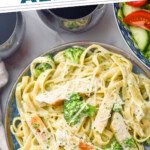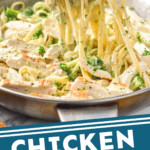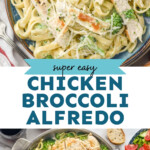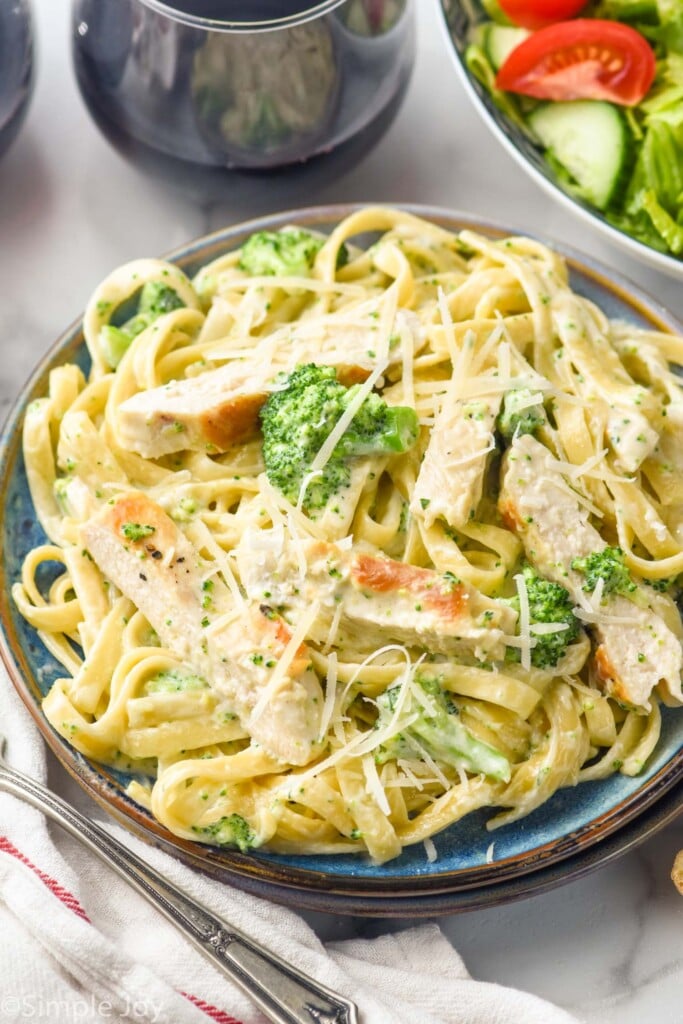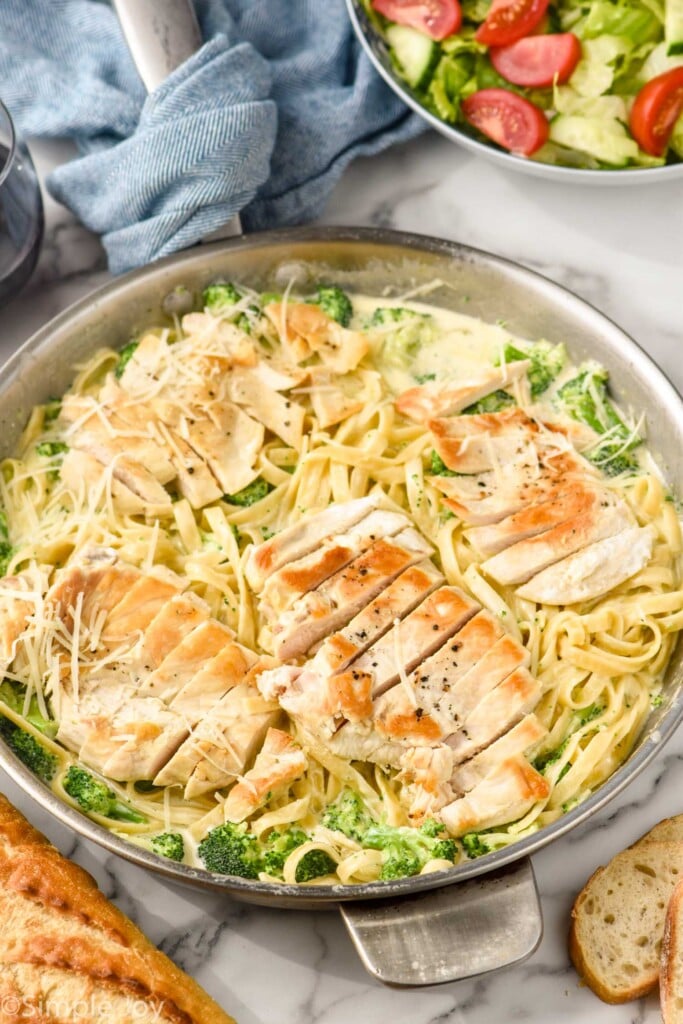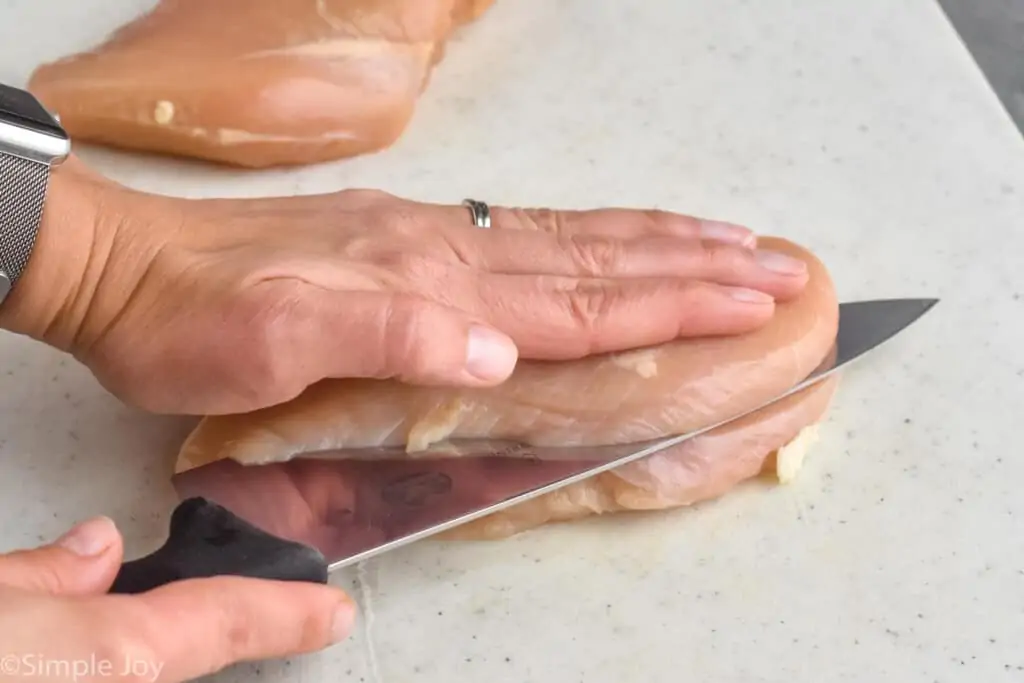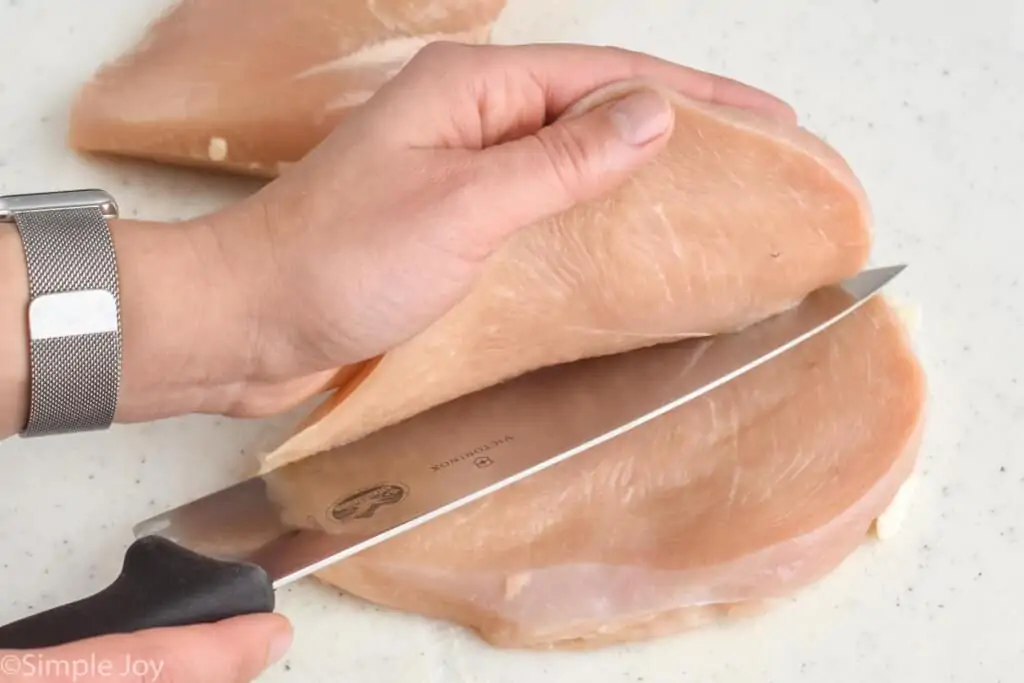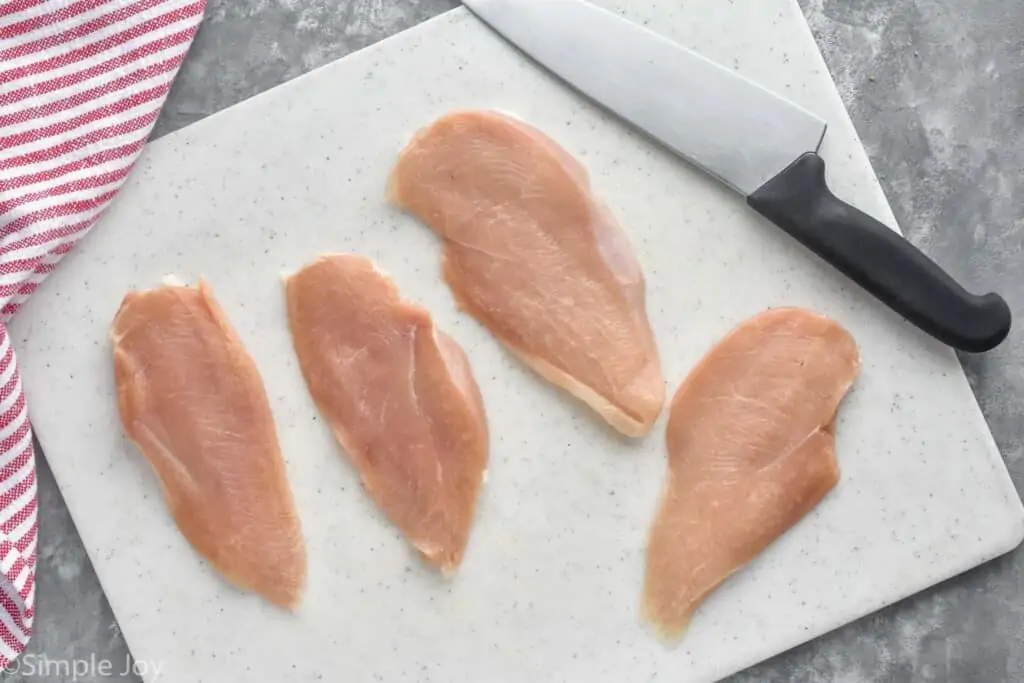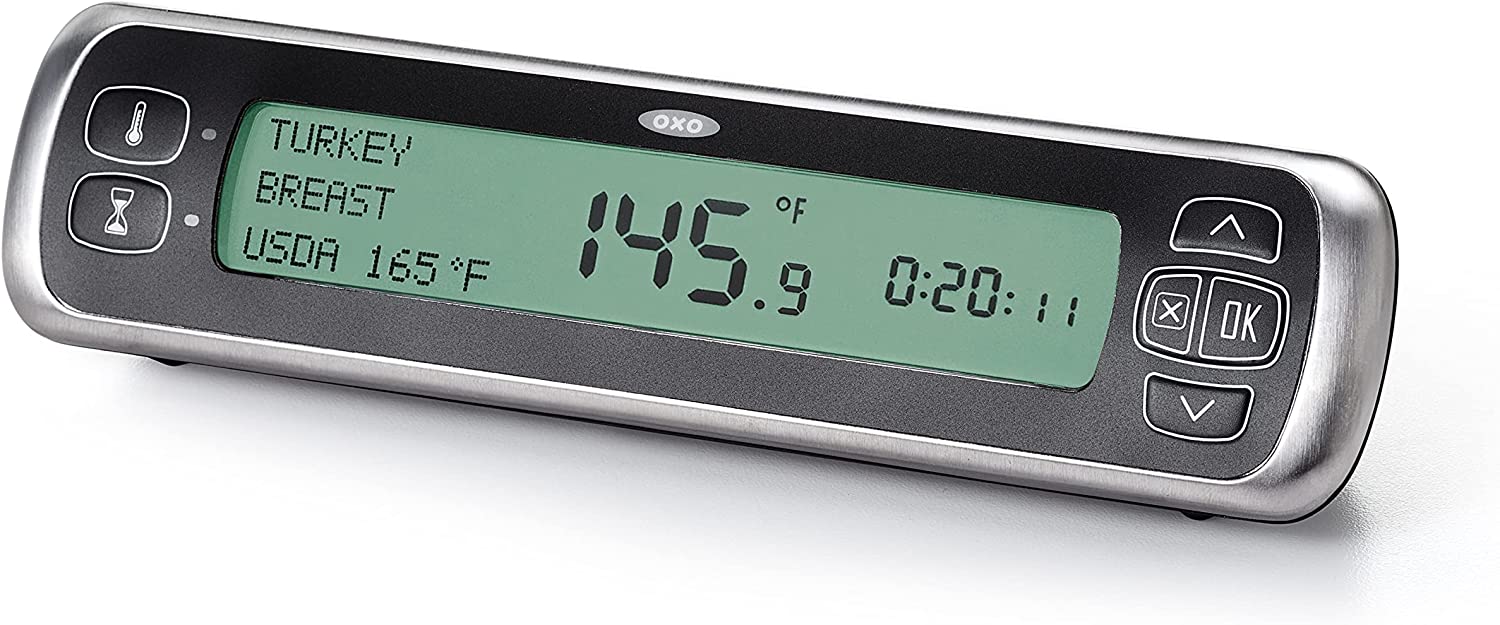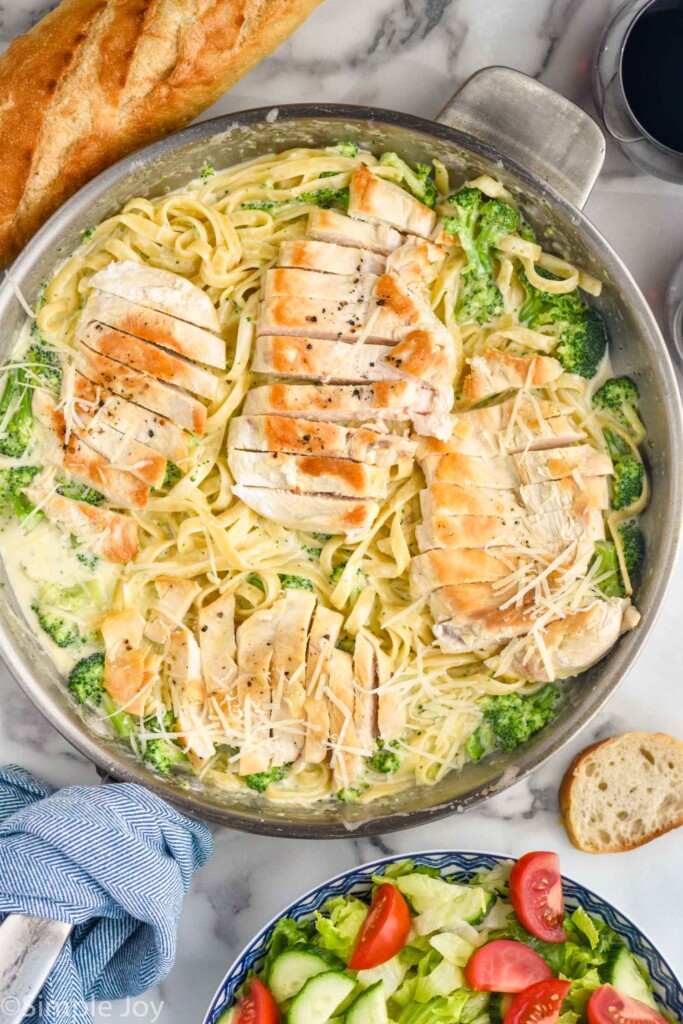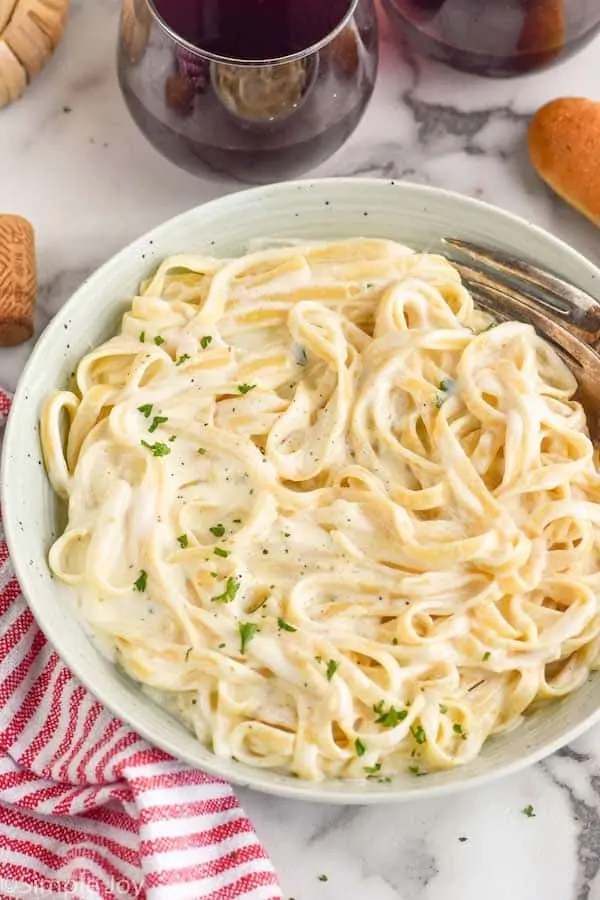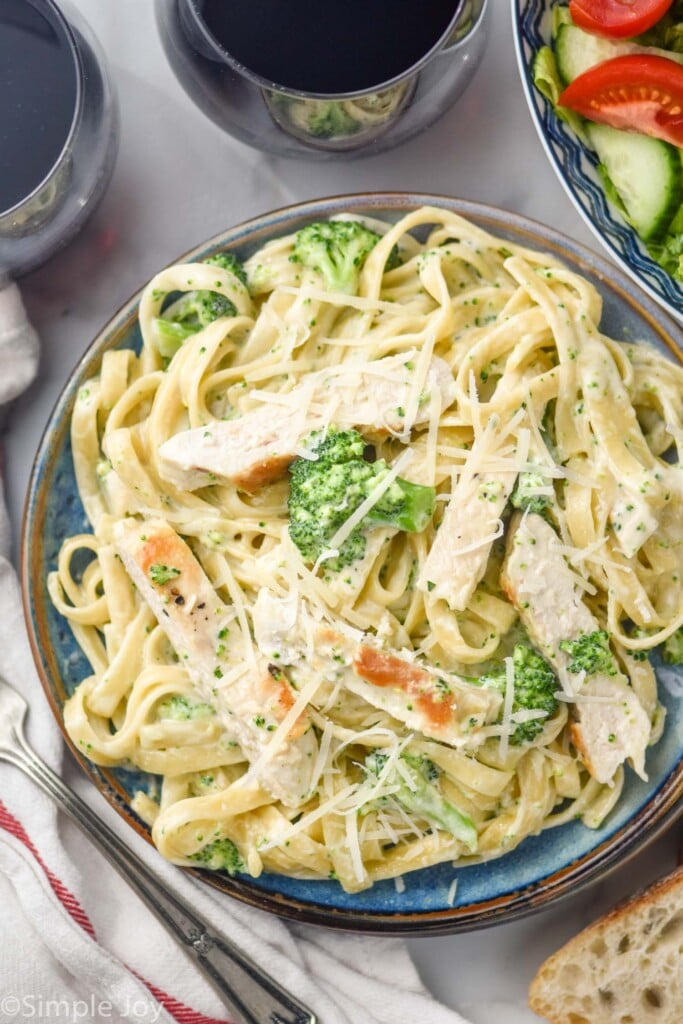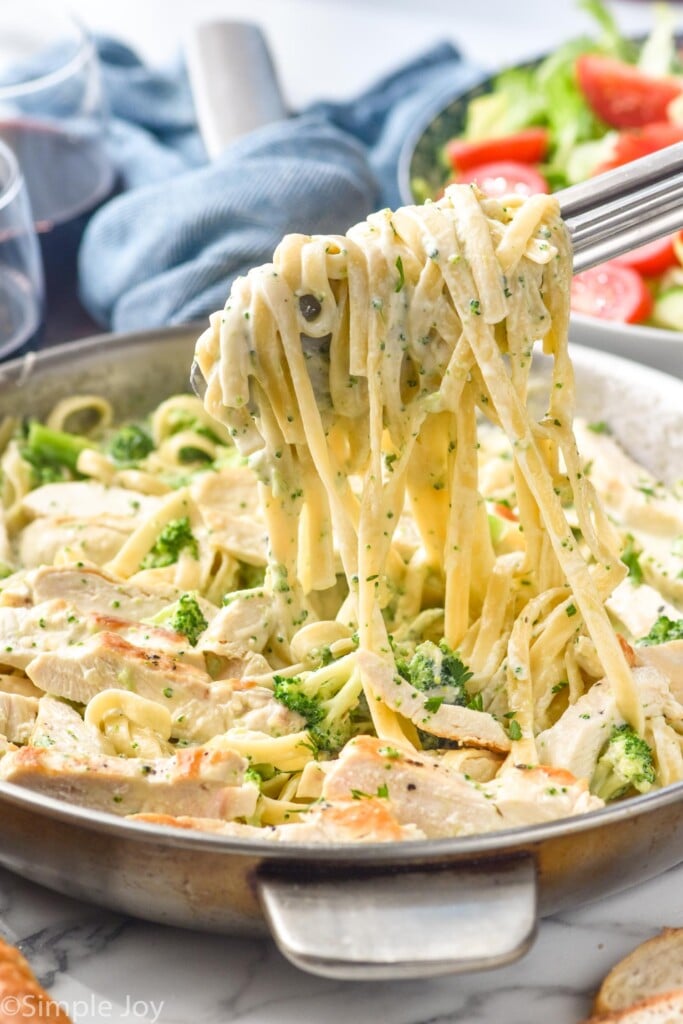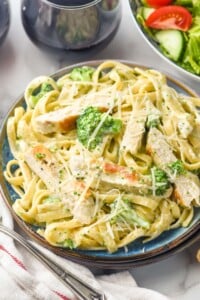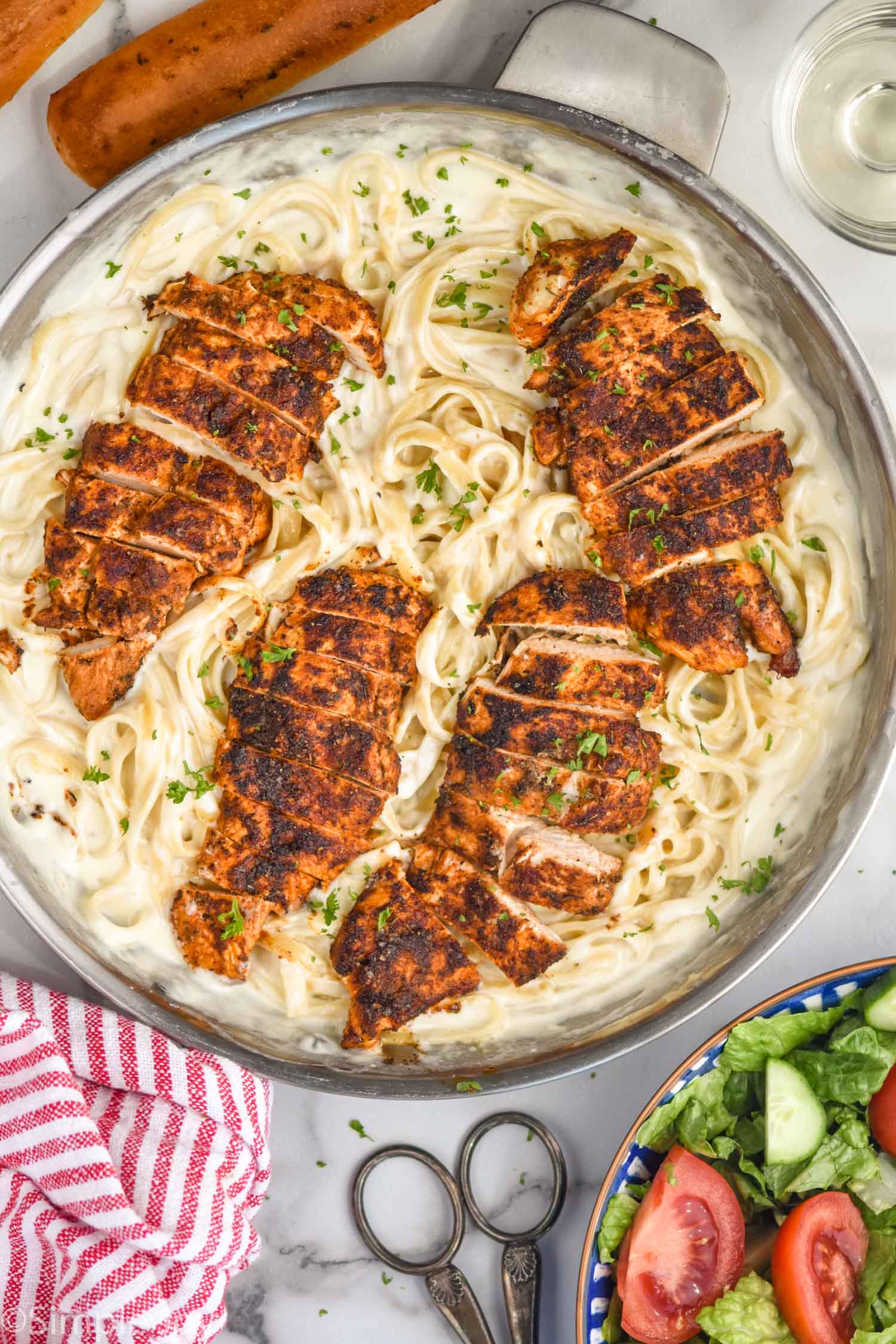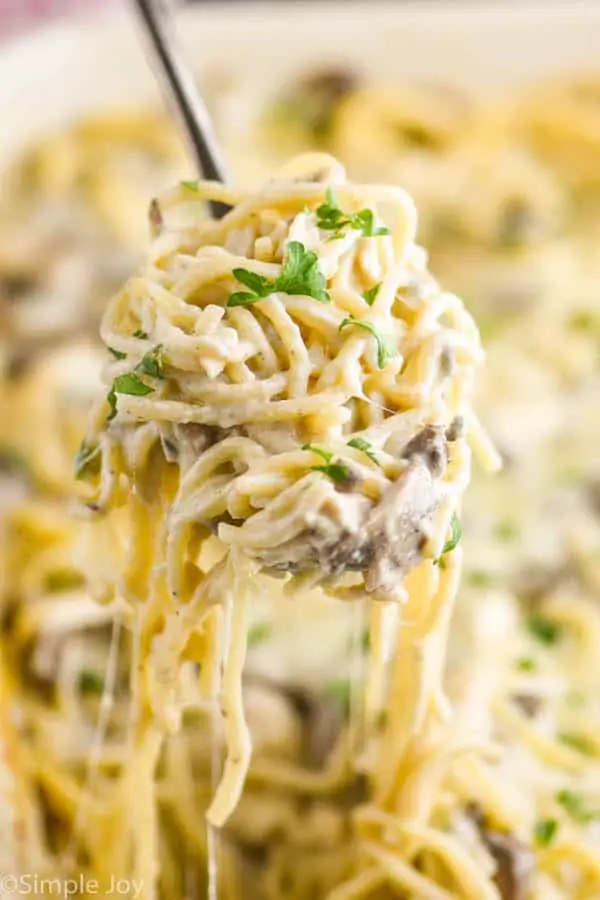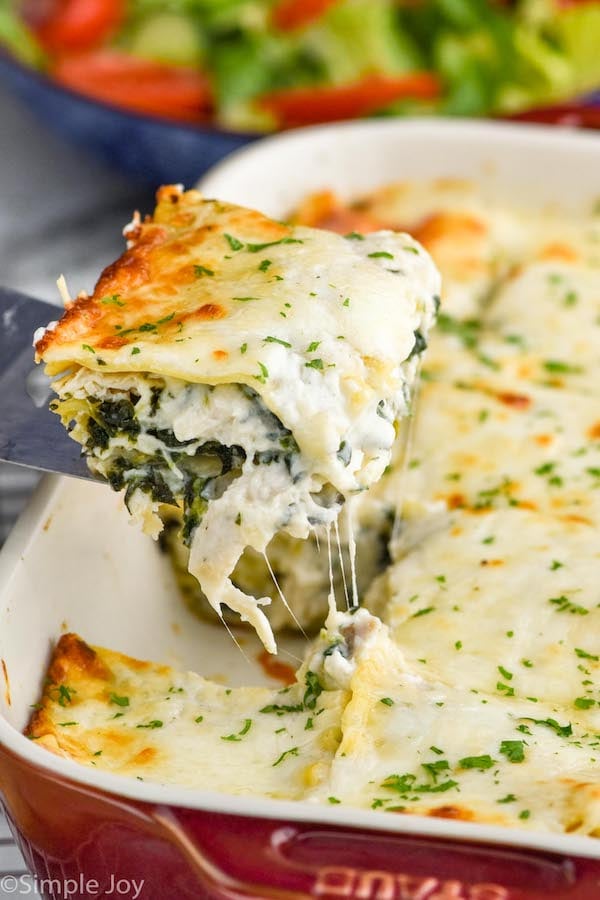I’ve never made an Alfredo recipe that I don’t love, and this one does not disappoint. We use really simple cooking methods here to keep prep time down and keep this a one-pot and one-pan recipe. Some fresh broccoli adds a little more nutrition to the recipe and the chicken adds some good protein. This is a filling dinner you will love.
Tips and Tricks
Fresh vs. frozen broccoli: I love to make this recipe with fresh broccoli because cooking it doesn’t add any time or extra dishes since it cooks with the pasta. If frozen broccoli is what you have on hand, I recommend adding it to the pasta and water when there is one minute left on the timer. Since it is already cooked, it basically just needs to thaw. Use a different pasta. Because of its long and flat shape, fettuccini holds the Alfredo sauce so well, but you can use any pasta in this recipe. Linguini, spaghetti, or penne would all be great in this recipe. You could also use a gluten-free pasta if you are cooking this broccoli chicken Alfredo for someone who can’t have gluten. Swap out the protein. You can use sautéed shrimp in this recipe so easily without changing up the recipe. In the step of cooking the chicken, instead add a pound of raw, thawed, deveined shrimp. Cook for about 2 minutes on each side. Remove the shrimp from the pan and tent it until it can be returned to the dish at the end of the recipe.
Cook the pasta. Bring a pot of water to a boil and add the fettuccini. Cook the pasta until al dente. Read more on this below. Add the broccoli. When there are four minutes left in the cooking time of the fettuccine, add the broccoli to the boiling water. When the pasta is done, drain the fettuccine and broccoli together. Cook the chicken. Season the chicken with salt and pepper and cook in a hot skillet for approximately four minutes on each side or until the chicken reaches 165 degrees Fahrenheit. Remove from the pan and tent with foil while you prepare the sauce. Start the sauce. In the same skillet that the chicken was cooked, whisk together the heavy cream and butter until the butter is melted. Bring it to a simmer and turn the heat down low for 15 minutes. Add the Parmesan cheese. Stir in the Parmesan cheese until it melts. Season with salt and pepper as needed. Put it all together. Toss the fettuccine and broccoli with sauce. Cut up the chicken into slices and serve on top of the fettuccine. Top with grated Parmesan cheese if desired.
Use plenty of water. Pasta expands as it cooks, so be sure to have at least four to six quarts of water in your pot. Add a teaspoon of salt to the water to add flavor to the pasta. Bring the water to a roaring boil. Don’t add your fettuccini until you see large, constant bubbles. You want it to be a roaring boil, not just small bubbles. Set a timer. As soon as you add your dry pasta to the water, set a timer following the directions on the packaging. Stir the noodles often. Because fettucini is long and flat, it is known for sticking together. Stir the pasta often with tongs once you add it to the water to help prevent it from sticking together. You can also add some olive oil to the pasta after you drain the water to prevent it from sticking together while the rest of the chicken and broccoli alfredo comes together.
Start by placing the chicken breast on a clean cutting board. Place one hand on top of the chicken and use a sharp knife to cut into the chicken at the thickest part. Butterfly it open and finish cutting all the way through so you have two even pieces. If the cutlets are more than 1/2-inch thick, pound them to 1/2-inch thickness. Chicken needs to cook to an internal temperature of 165 degrees Fahrenheit. With your chicken cut into cutlets and pounded into even thickness, it will take about four minutes on each side for them to be fully cooked for food safety purposes but not overcooked. Your best bet to avoid overcooking the chicken is to use an instant read thermometer. For the best Alfredo sauce, you want to grate the Parmesan from a block rather than buy a bag of pre-shredded cheese. Especially in a recipe like this, where the texture and flavor of the sauce depend on how well the cheese melts, you will be able to tell a difference. Be sure to taste the sauce at the end and add more salt and pepper as needed. The seasoning at the end really pulls together the dish, so be sure to play with this.
Heavy cream: Do not use milk as you really need the thickness that heavy cream provides. Butter: I always recommend cooking with unsalted butter so that you have control over the salt in the recipe. You can always add more salt to fit your preferences. Parmesan cheese: With so few ingredients, the Parmesan is a key ingredient in this sauce. Like I mentioned above, it is definitely worth buying a block of Parmesan and grating it yourself rather than buying pre-shredded cheese. Salt and pepper: Brings the dish all together.
If you absolutely must reheat leftovers, I suggest doing it on the stove top. Cook it over low heat adding a little bit of milk and stirring often.
Garlic Bread Caesar Salad Tomato Bisque
